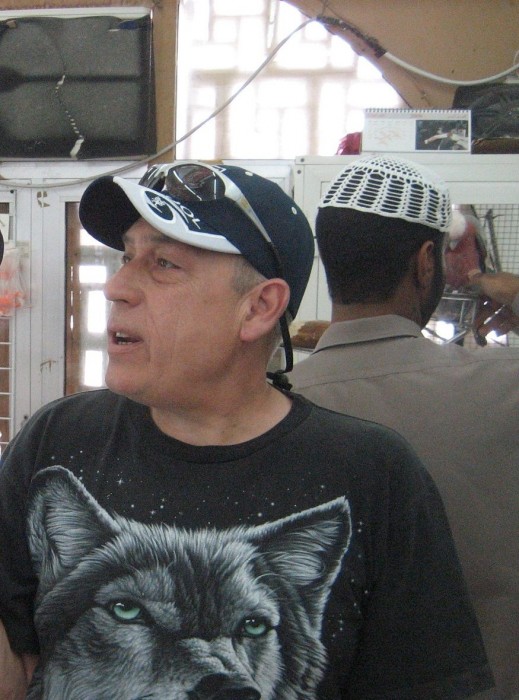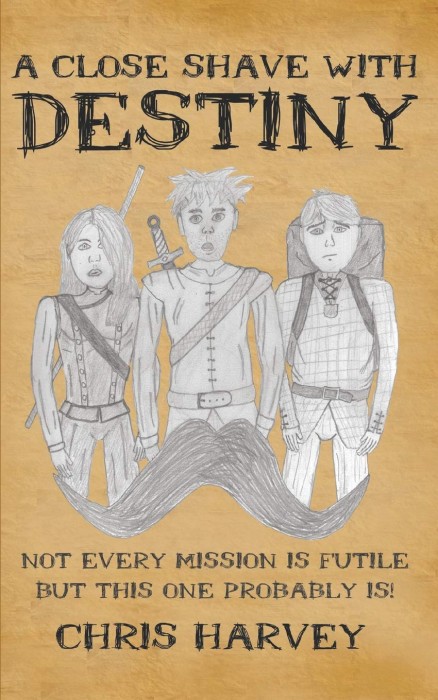PHP Deprecated: Creation of dynamic property Joomla\Registry\Registry::$default is deprecated in /home/authorsinfo/public_html/libraries/vendor/joomla/registry/src/Registry.php on line 937
PHP Deprecated: Creation of dynamic property plgContentLayerslideshow::$context is deprecated in /home/authorsinfo/public_html/plugins/content/layerslideshow/layerslideshow.php on line 38
PHP Deprecated: Creation of dynamic property SocialPoints::$string is deprecated in /home/authorsinfo/public_html/administrator/components/com_easysocial/includes/dependencies.php on line 123
PHP Deprecated: Creation of dynamic property SocialBadges::$string is deprecated in /home/authorsinfo/public_html/administrator/components/com_easysocial/includes/dependencies.php on line 123
Dog Training for People, Lesson 1: The Trick of the Tail
The Trick of the Tail
Most people misunderstand a wagging tail to indicate friendliness. Actually, a dog wagging her tail just means she has excited energy; such energy may or may not be friendly. Too much excitement can lead to insecure nervousness or even aggression. An excited dog can become dominant or may become the target of another dog’s correction. In addition to noticing a wagging tail, notice if the dog’s body is relaxed or tense. Are they intensely staring, ears up, & leg muscles stiff, or are they loose and breathing easily. Other indicators can come from other dogs. Do other dogs ignore your dog? This signals that they do not want to interact with unbalanced energy. However, other dogs may also correct your dog’s overly excited energy; dogs naturally nip an over-excited dog to correct an energy that is not a healthy, natural state of mind. This may appear like an aggressive attack & a fight may ensue or a dog may become insecure. It is important to prevent such misunderstandings & “nip” a potential negative situation in the bud. Too often, other dogs may also have a similar imbalanced, overly excited energy, and greet your dog & play intensely. However cute this may seem, play needs to be monitored. Dogs should greet in a calm, respectful manner and play when they are allowed to play, but stop if you direct them to subside over excitement.
For example, many dogs fixate on toys, obsessing over a ball until it is thrown. This is not healthy. People should not throw a ball if a dog is in that state of mind. Play with others or toys should be kept at a level that can easily settle down. Tug-of-war should be avoided, & dogs should not be allowed to do the “kill shake” to toys. Anyone should be able to go step on or “claim” a toy with their grip and wait for the dog to let it go. Do not snatch it away. Physically overpowering a dog does not teach them. The actions they take on their own indicate that their mind learned & obeyed out of respect. This is not to say you don’t want your dog to enjoy himself; it is actually healthier for your dog for you to maintain structure in all aspects. While dog handling techniques differ greatly from human psychology, this particular aspect is similar to parenting; children are allowed to play but not roughhouse for a reason, just as dogs should play but not too intensely. Also similar to parenting, or even monitoring one’s health, correcting things at an early level is safest and best. The same goes for dog handling.
It can start with a seemingly simple & harmless wagging tail. Correct your dog if he is overly excited. Do not return home & greet your dog excitedly. While she may be happy to see you, in nature, dogs greet their pack leader’s return with calm respect. If it is a big deal for you to return, dogs interpret it as a big deal for you to leave, and this can feed insecurity & separation anxiety, leading to a host of unwanted behaviors. Also, establishing order in the home can translate to your dog’s good behavior when you go out. Make them wait with respectful distance if you prepare food or open doors for guests or to go on walks. Only leash them if they are calm. Only give treats if they are respectful. Claiming your space and making them respect boundaries will help them know you are in charge outside of the home as well, make them secure & look to you guidance in all situations. Go through doors first, directing them to wait until they are invited; this not only teaches them manners & respect for your leadership position, but is safe & provides the security they need. Repeat these routines daily, upon leaving or returning home. And the more consistent you are & patient with simple corrections, if needed, especially when the process is new to your dog, the less time it takes your dog to learn the new routine.
Once outside, exercise your dog before expecting them to follow discipline. They may have pent up energy or stress that needs to release before they can focus. Different breeds have different exercise needs. Different personalities have different needs, too. An insecure dog may need encouragement to walk at all; do not pull from the front, gently encourage from the rear, release any tension on the leash if they move forward, and lift tail & chin. On the other hand, a dominant dog may need to learn to heel at your side, sit at curbs, and other respectful and safe gestures. Once they have released energy, direct them to walk in a structured manner, not sniffing freely unless invited to do so. Dogs who like to use the bathroom early in a walk may do so, but then have a lengthy walk following you at a brisk pace. Dogs who use the bathroom later in a walk should follow you in a structured manner for awhile, then be rewarded with a brief free roaming and sniffing period. All walks should conclude with following you and returning home, waiting at the door until you go through, calmly release their leash & invite them in. While walking, do not let him meet & greet other dogs in an overly excited state. A quick “Ssh” or other sharp sound and swift tug & release sideways or straight up on the leash can indicate to your dog that you want a lower level of energy. Corrections should be made at the same level of intensity that the dog displays; this is why it is best to correct them when they first start to stare or tense up from a distance, so your correction can be minor. If the dog is already lunging, you have waited too long & now must correct at a higher level. The former is better for you & the dog. Waiting too long not only requires more energy to subside the situation, but can confuse the dog why you let it go so far then suddenly disagreed. It also runs the risk of you becoming frustrated. Simpler, lower level corrections help you remain positive, patient and in control. A collar should be high up on the neck near the ears to best access their mind, not low near the shoulders, which only strengthens their resistance reflex. Also, a dog with too much energy should be made to let other dogs sniff him from behind first; this gesture will naturally tell him to enter into a more submissive energy state.
ALWAYS be aware of your own energy, as you are the predominant source of energy & guidance for your dog’s behavior. Did you enter into a situation anticipating a problem would ensue or were you calm & confident? Did you pull tension into the leash or were you relaxed? If you had to correct your dog, were you frustrated? If an unwanted behavior occurred, did you remain calm & in charge, or did you become nervous, fearful, angry, or panicky? And do not call out when correcting a situation. This only adds to the energy that is already too intense, whether from excitement or dominance or aggression or fear. Instead, handle the dog calmly, swiftly, patiently, & decidedly.
Do not use your dog’s name when making a correction; a name is best used when your dog is calm & submissive, when you can show affection. Do NOT show affection to soothe or calm your dog down; this is a common misconception & dangerous mistake. Your dog will only understand affection as a reward for her current behavior. So if your dog is nervous or too excited, it is as if you are telling her, “Good job! Be that way!” This is confusing to the dog, as she naturally can feel something is imbalanced, but needs you to correct the state properly. Lifting a tail can release tension, petting under the chin can encourage confidence, rather than petting on top of the head, which is dominant. When your dog is nervous, encouraging him to deal with a situation if he wants to avoid, by making him sit, touching from rear to encourage forward movement, or even ignoring minor issues, can give him the time to relax under unfamiliar or stressful circumstances. If your dog’s nervousness causes him to growl or display other unwanted behavior, correcting swiftly is best to show him you disagree with the reaction & redirect to show him you want him to be calm. Do NOT separate dogs when they are not calm. Let them remain near each other, with the more intense dog in a more submissive position of sitting or lying, & the more nervous or submissive dog standing. When they relax fully, you will see breathing ease, ears & other muscles relax, they wont resist or react, then they can leave calmly. Simply waiting while providing expectations is a powerful teaching tool. It shows them you are calm but in charge. They can feel secure & relax and follow your leadership. The most quiet, calm, patient yet determined means are most effective.
Seek out opportunities to practice effective techniques of your own energy, dog handling skills, & rehabilitating any unwanted or imbalanced behaviors in your dog, improving your life at home with your dog, and in the community with other dogs. Share helpful information with others as you become more familiar with the techniques, helping make your neighborhood one of happy, healthy, balanced people and their dogs, who can then wag their tails for the right reasons!
When you subscribe to the blog, we will send you an e-mail when there are new updates on the site so you wouldn't miss them.

















Comments